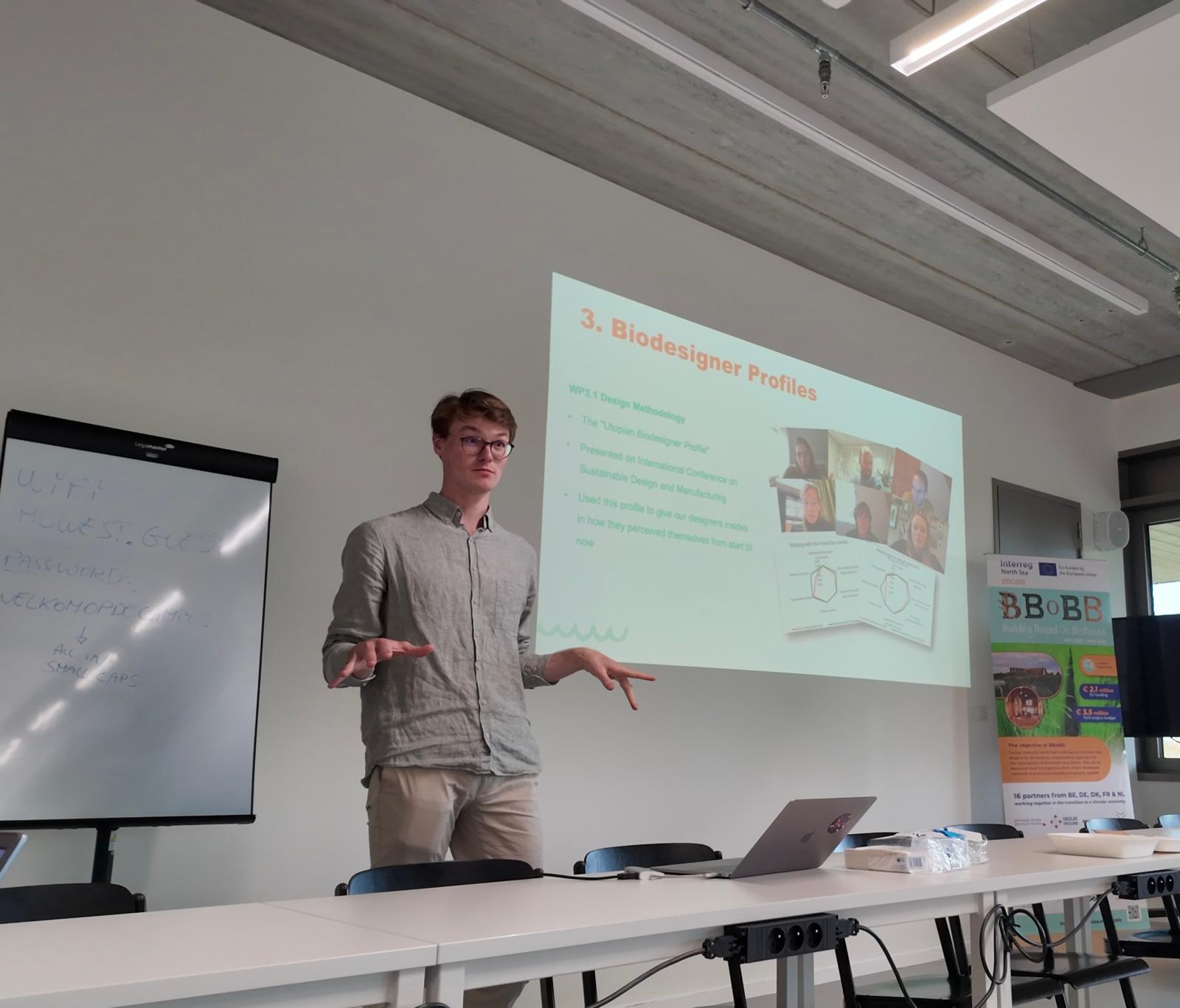In this series, we spotlight the creative minds shaping BBoBB. Who are they, what drives them, and how are they advancing biodesign with bio-based materials?
This edition features Bert Vuylsteke a systemic designer and developer and one of the creatieve minds behind the Biodesign Toolkit which was developed in the context of his doctoral research as an important milestone in the BBoBB.
Who are you?
I’m Bert Vuylsteke, a systemic designer based in Belgium. I focus on design as a way to intervene thoughtfully in complex systems. My work always starts with the question: what system am I affecting, and how? I map the potential positive and negative impacts of each product or service I develop, to avoid blind innovation and ensure that what I design adds conscious, contextual value.

Sustainability is a guiding principle in my work, not only in ecological terms, but also economically and socially. I believe a good design contributes across all three levels. I strive for regenerative solutions that collaborate with nature instead of exploiting it, and I see every design as part of an ongoing process never final, always evolving.
Your vision on working with biobased materials
Designing with biobased materials means taking a systemic approach acknowledging that every design intervention affects a broader system. These materials are not just sustainable ‘alternatives’; they’re entry points for rethinking how we relate to nature, production, and value.
For me, true sustainability means creating solutions that are economically valuable for all stakeholders, socially just in their creation and use, and ecologically regenerative. Biobased materials have the potential to contribute on all three levels, for example, by offering high-performance insulation that also improves acoustic comfort, or by supporting local, fair supply chains.
In the future of design and construction, biobased materials can help us shift from extractive to regenerative systems. But only if we design with nature, not against it — and remain humble enough to see design as a continuous process of adaptation, reflection, and responsibility.
Any final thoughts or hopes for the BBoBB project?
I hope the BBoBB project will help make designing with, for, and from nature more accessible to professional designers and the industry.

Find more information about the Biodesign Toolkit at this link Launch of the Second Edition of the Biodesign Toolkit BBoBB | Interreg North Sea
As you stated, we as BBoBB believe that biobased materials have the potential to contribute to true sustainability which are creating solutions that are economically valuable for all stakeholders, socially just in their creation and use, and ecologically regenerative. Thank you all for the contributions you have made so far, and for your future efforts toward this shared goal.
